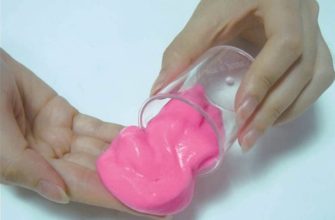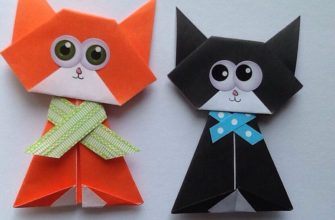Slime or lizun is a popular pastime among children and teenagers. It looks like a lump of mucus that stretches, takes different shapes, but if you put it on a flat horizontal surface, it will spread like a liquid. These amazing properties are inherent in non-Newtonian fluid. Playing with slime in your hands is fascinating and enjoyable, that's why it is useful for children. But is this toy really safe, is it harmful for children to knead factory-made slime in their hands, or is it still quite acceptable? It is worth looking into the matter thoroughly.
- What is slime made of and is it safe for health?
- First appearance
- What problems might there be?
- Who shouldn't play with slimes
- What happens if you eat a slime
- The harm and benefits of slimes and licks
- Beneficial properties
- What harm can be caused
- Safety precautions when playing with slime and making it
- What to avoid in the composition
- Safe Slime Recipes for Homemade Cooking
- Toothpaste Slime
- Slime made from plasticine
- Edible slime
What is slime made of and is it safe for health?
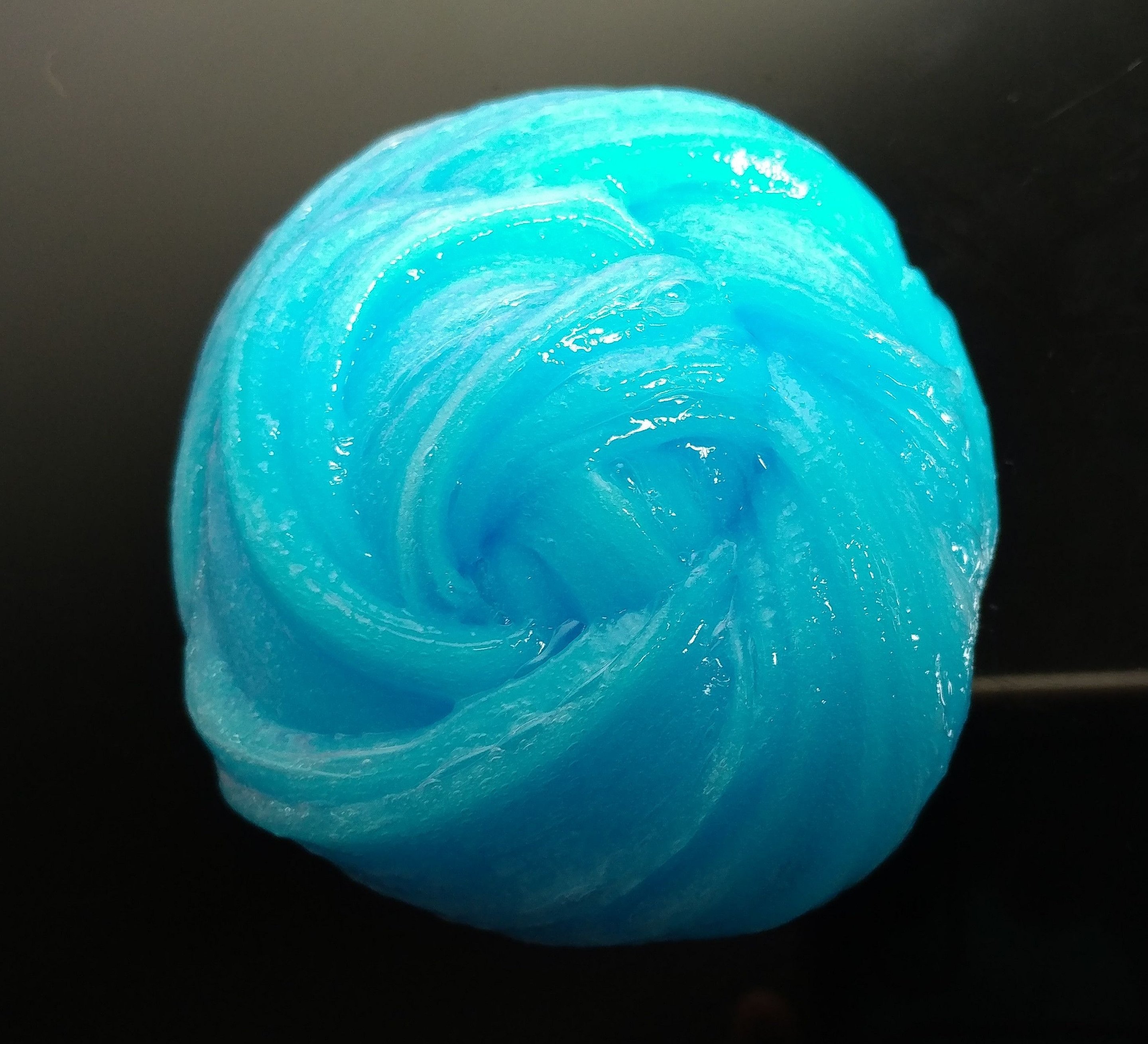
The main danger lies in the composition of the slime. Even expensive products that have the EU label may contain substances harmful to the child's health.
And what can we say about cheap Chinese fakes or those slimes that children make after watching videos on the Internet. Therefore, if we talk about slime in general, the benefits and harms are not so obvious, because they depend on the specific model of the toy.
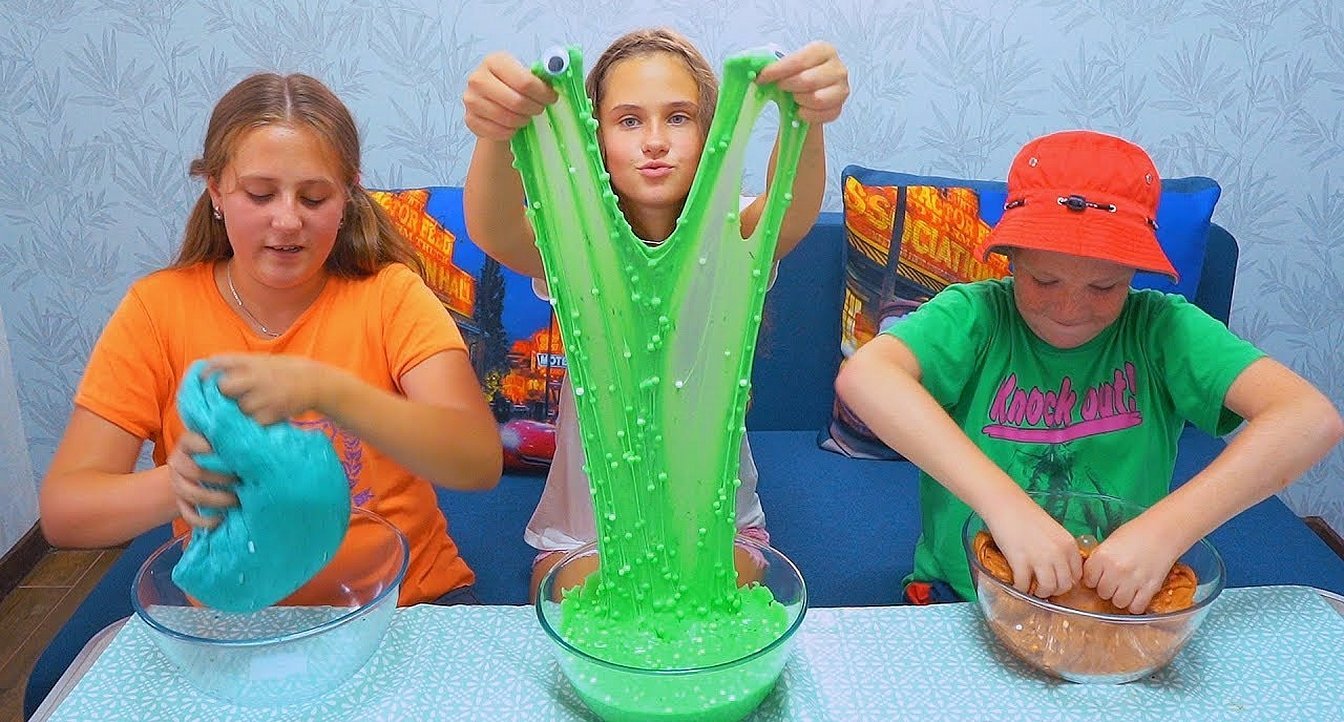
First appearance
This toy is not as new as it may seem. It first came to market in 1976, when Mattel released the first slime for sale.
At that time, it included guar gum, which was produced from beans of the same name. Zabava became very popular.
For reference! In the cartoon "Ghostbusters" there was a character Slimer, who had the properties of a popular toy. In the Russian version, he was called Lizun, which is where the new local name came from.
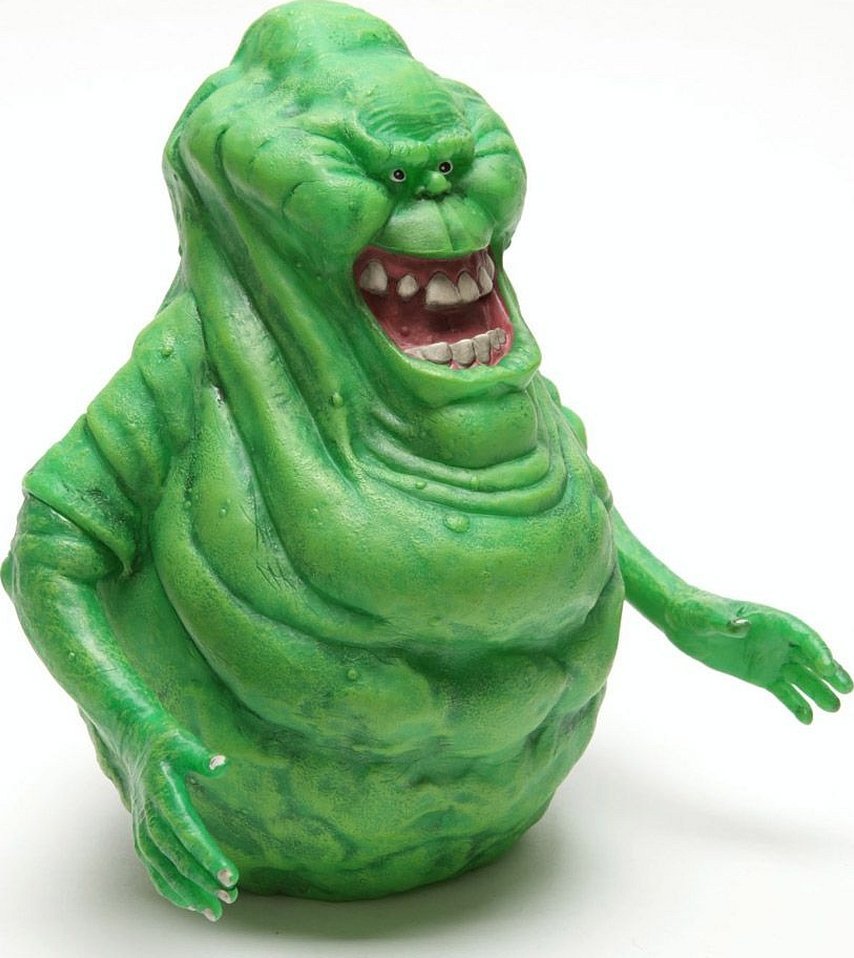
Over time, the composition of slime changed; bright dyes and decorative elements were added to it.
Currently, ready-made slimes do not contain natural ingredients - they are pure chemistry. And although the ingredients themselves may be harmless, in combination with each other and with prolonged contact with the palms, and especially when swallowed, they can cause allergic reactions, poisoning and deterioration of the baby's health.
When purchasing, it is important to study the composition of the slime or make the toy yourself from food products that are safe for the baby.
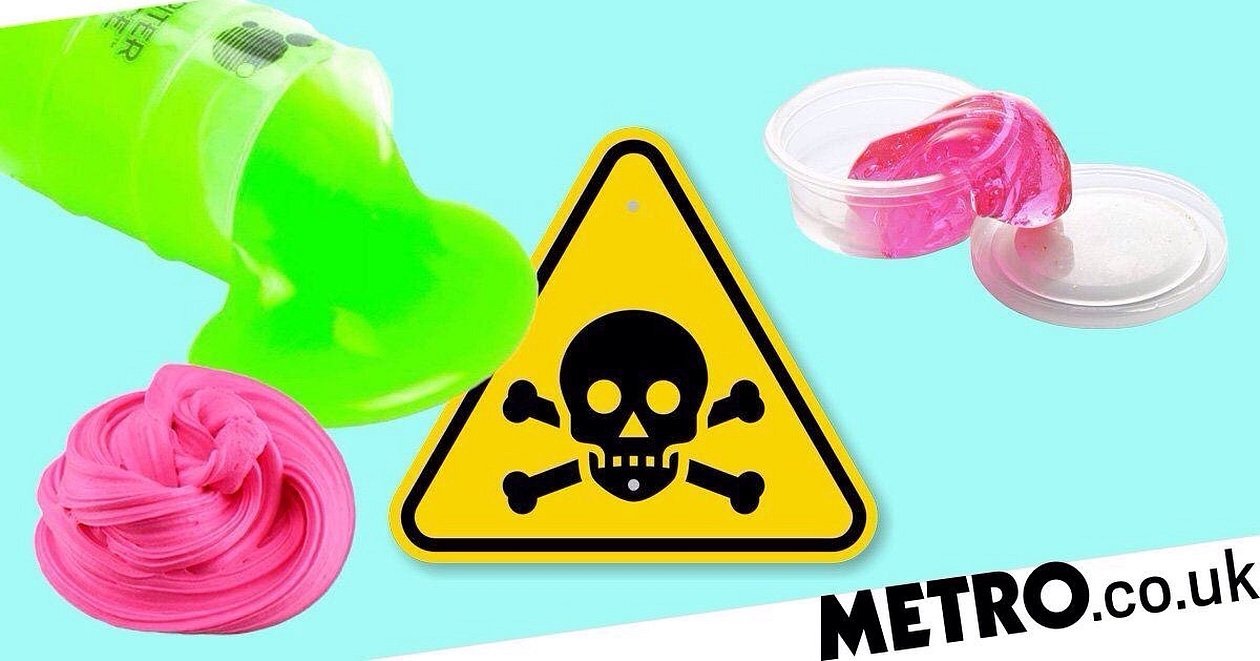
What problems might there be?
Playing with slime involves moving it around in your hands. There is constant contact with the child's skin.
Are store-bought or homemade slimes harmful to a child's health? Yes, if they contain the following components:
- PVA glue - it is not toxic in itself, but when it gets into the body, it becomes a dangerous poison that can cause serious poisoning. In addition, the glue has a persistent smell that begins to be felt in a closed room, causing a headache or nausea with prolonged contact.
- Borax or sodium tetraborate is a salt of boric acid. It is widely used in disinfectants, including contact lens fluid. But when it enters the body, it can cause irritation of the eyes, skin, and respiratory organs. It also affects the gastrointestinal tract when ingested.
- Fragrances - unscrupulous manufacturers add fragrances to slimes to hide the unpleasant chemical smell of the components. Inhaling these "aromas" leads to headaches and can cause vomiting in children.
- Starch, gelatin and cellulose are natural components that, it would seem, do not harm health. But with prolonged use of the slime, pathogenic microbes, mold and other microorganisms begin to accumulate and multiply in them. Getting into the child's body, they can provoke a deterioration in health.
For reference! In Soviet times, boric acid was used to make an effective poison for crawling insects, and now it is included in children's toys.
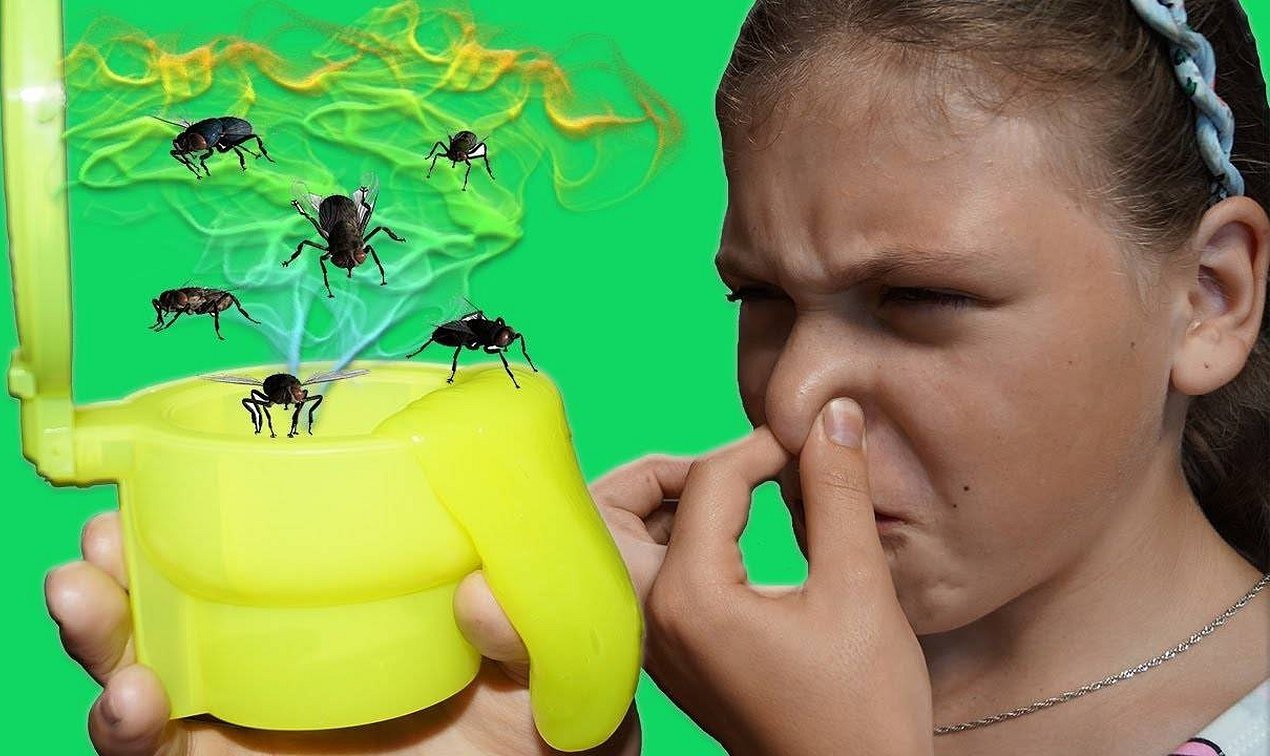
As a result of the analysis of the composition of the main components, we can conclude why slimes are dangerous for children if the rules of the game are not followed. They can cause dermatitis, allergic reactions, redness and itching, headaches and vomiting.
Who shouldn't play with slimes
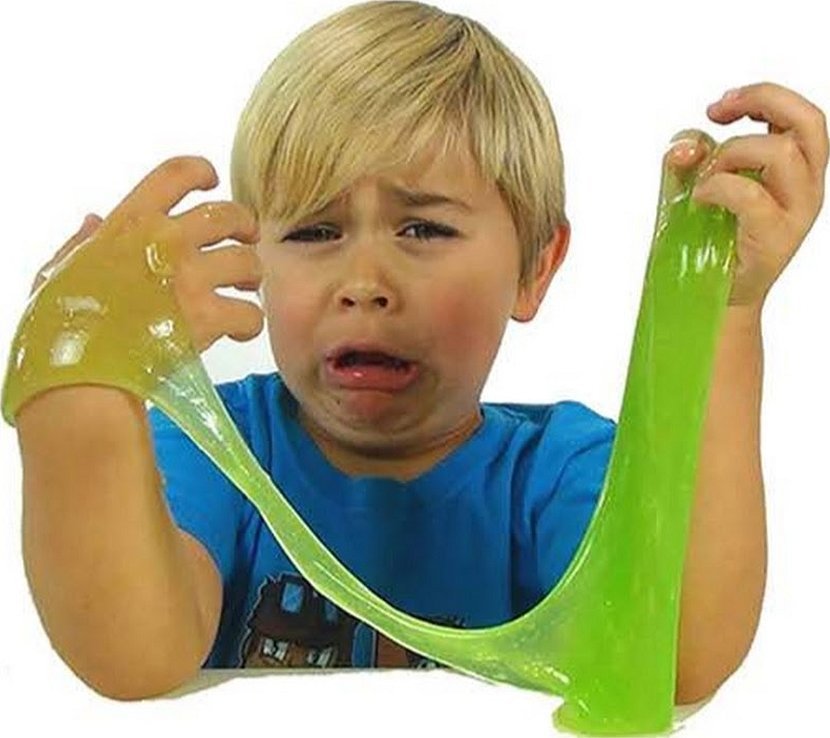
And yet, you can and should play with slimes. But you should definitely follow safety rules so that the harm of the slimes is not felt.
Important:
- do not give the toy to children under 3 years old, because they put everything in their mouths;
- do not buy slimes for children prone to allergic reactions;
- If the baby has open wounds on his palms, it is better to refrain from playing until recovery.
What happens if you eat a slime
The most dangerous thing is getting the slime into the body. In this case, diarrhea, stomach upset, headaches may occur. In severe cases, the kidneys and digestive organs are affected.
If a child has swallowed slime, they should go to the hospital to have their stomach washed out and receive the necessary assistance.
Attention! At the first signs of poisoning with a slime, no matter whether the child swallowed it or just got carried away playing, you need to put the dangerous toy away and help the child.
The harm and benefits of slimes and licks
And yet, it is not for nothing that slimes have become so popular with children. They have a lot of positive qualities, and are even recommended for many children. The benefits and harms of this toy, which adults should know about, are described below.
Beneficial properties
For children over three years old, pediatricians recommend them for the development of fine motor skills, they help to better coordinate movements. In addition, the game develops imagination, arouses interest and improves mood.
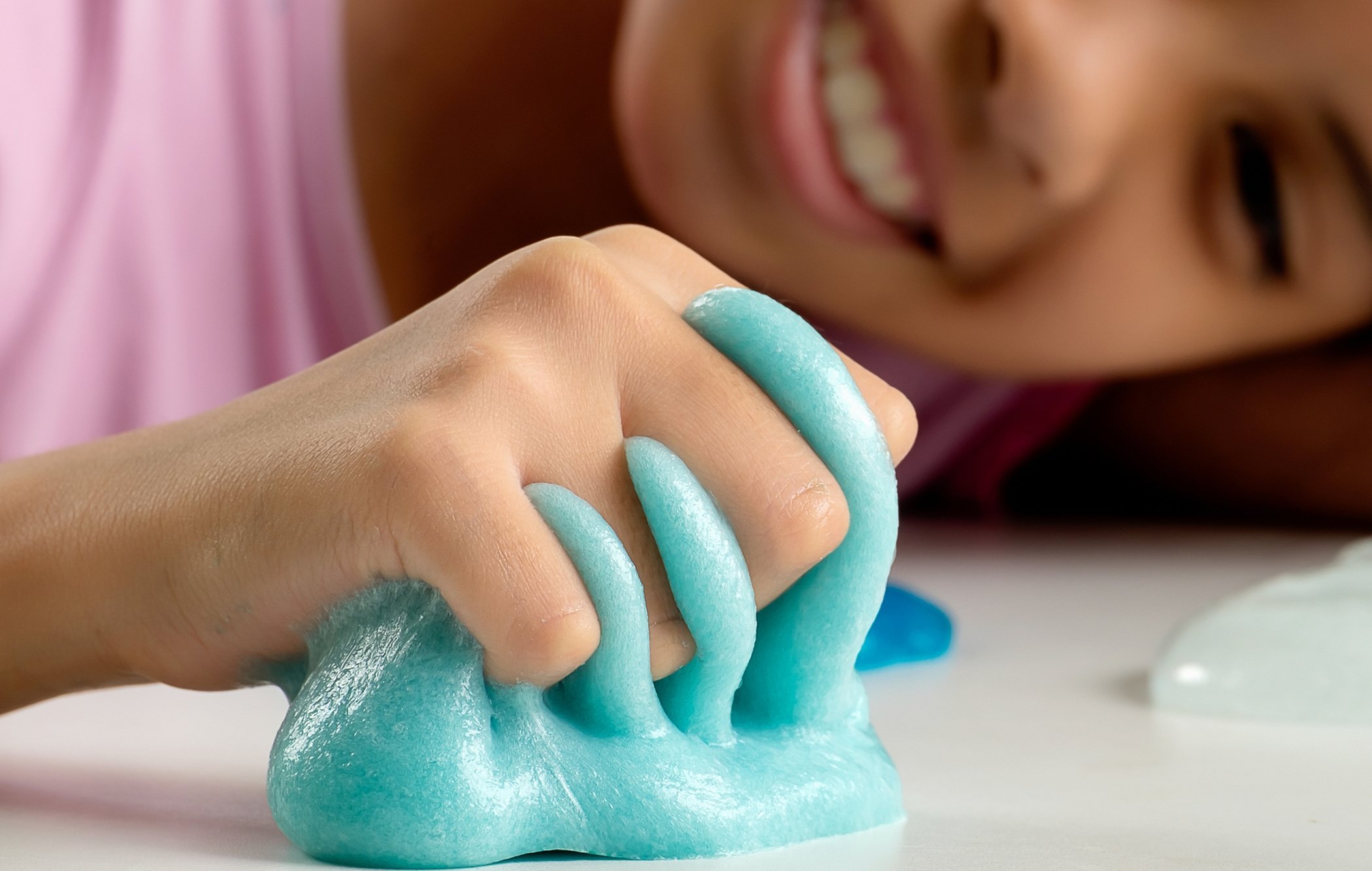
Slimes are anti-stress toys. Indeed, squeezing a slime in your palms relaxes muscles and helps relieve tension not only for children but also for adults. That is why slimes are popular and useful.
Those who have suffered a sprain or fracture of the upper limbs know how useful slime is for the hands - exercises with it help improve blood circulation and quickly restore limb function.
And slimes have also found a use in everyday life. They are great at collecting small debris from hard-to-reach places:
- computer keyboards,
- grilles on the car dashboard,
- in the far corners of cabinets and cupboards.
Of course, after such use you can no longer play with the slime; it needs to be disposed of.
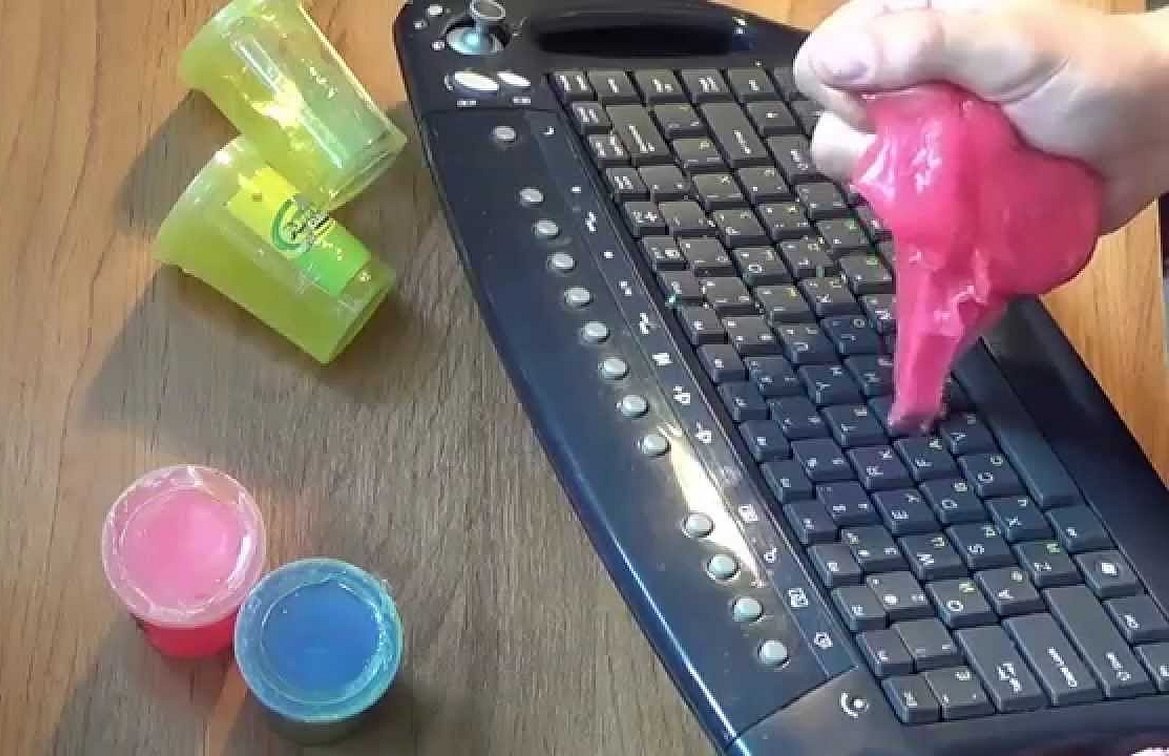
What harm can be caused
The harm of slimes is in the boron they contain, a chemical element that is dangerous to health. And in the slime that is sold in stores, its amount exceeds the permissible norms by 4 times!
In addition to the symptoms already mentioned: diarrhea, vomiting, irritation, the child may also experience more serious consequences of contact - convulsions.
Scientists have conducted research into the damage that high levels of bromine can cause to animals. The results were depressing. The test subjects gave birth to babies with low weight, congenital defects, and developmental delays. After studying in a research lab, scientists strongly recommend being careful with products like slime, especially for pregnant women. And limiting children's play time. Here's why slime is dangerous for children.
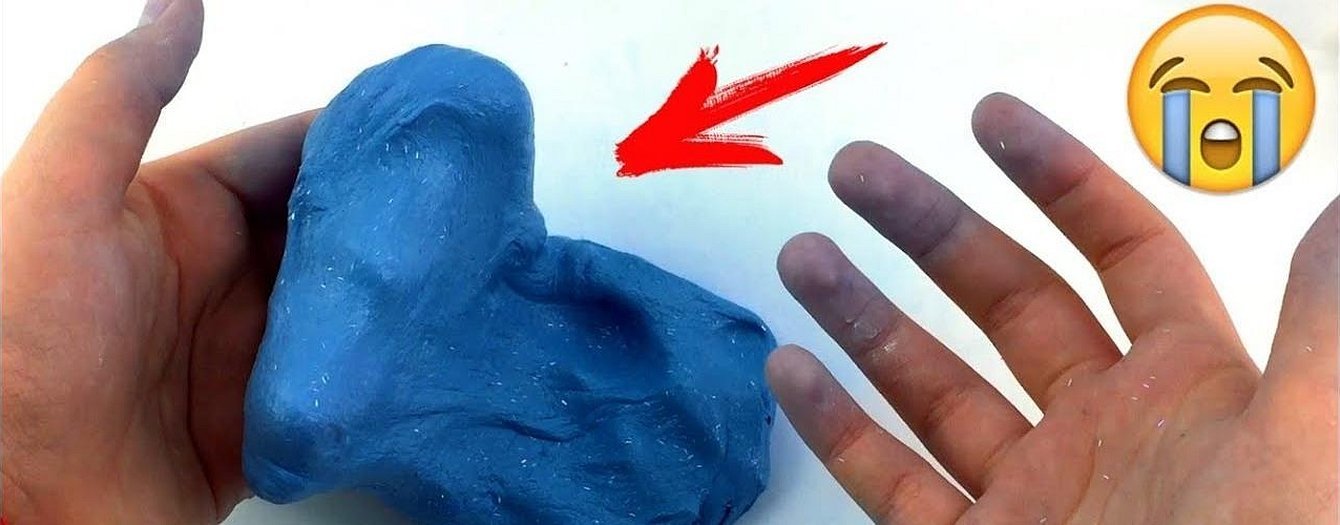
Safety precautions when playing with slime and making it
It is up to parents to decide whether to buy a slime for their baby or not. In any case, it is necessary to take precautions for children to reduce the danger from slimes:
- Do not give the toy to a child if he has open wounds. All harmful substances will enter directly into the blood with such contact and will cause harm to health.
- It should not be given to children under 3 years old, because they put everything in their mouth. And even at an older age, children can try a bright smelling toy on their tongue. Therefore, parents should supervise children playing with slime.
- It is recommended to store homemade slime in the refrigerator.
- To avoid unpleasant consequences, it is better to limit the time of games. It is enough to give the child 30-40 minutes for fun, and then switch his attention to other games.
Important! After playing with slime, be sure to wash your hands well with soap!
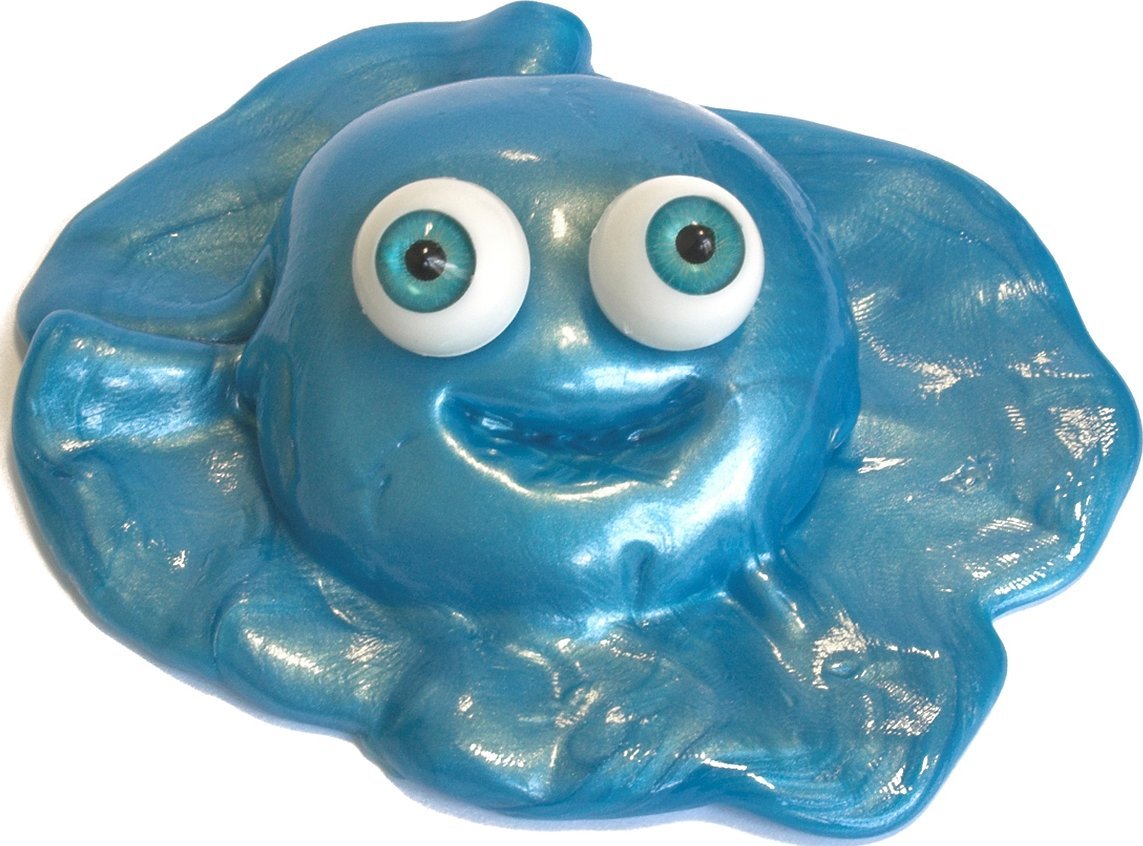
What to avoid in the composition
When buying slime, you need to study its composition. Although not all manufacturers write the marking of the incoming components. But you can immediately reject a low-quality product.
- If the slime has a strong smell, it is better to refuse to purchase it.
- It is also important that the slime does not contain more sodium tetraborate than it should; its amount should be reduced to a safe minimum.
If the slimes are made at home, it is important to pay attention to their composition in order to minimize harm and take precautions. When working, wear gloves, work in a well-ventilated area and use separate dishes for mixing the composition.
A homemade composition may include the following elements:
- Sodium tetraborate is an activator of the slime mixture. It is included in detergents and antiseptics. The main question in this case is whether it is dangerous to use sodium tetraborate to make a slime. Experts say that prolonged contact with this reagent causes irritation and allergies. Therefore, it should be used only if there are no other options.
- Glue - PVA is most often used to give the slime elasticity. Avoid contact with eyes and mouth.
- Detergents can also cause illness. When children and adults wash their hands or dishes, there is a short-term contact of these products with the skin, which does not cause any consequences. But in the composition of the slime, the effect is longer and can be dangerous for the child.
- Salt and soda are food components, but if in prolonged contact with the baby’s delicate skin, they can cause irritation and inflammation.
Important! Any slime, whether store-bought or homemade, can cause illness in a child. It is necessary to limit the time of play, not allowing prolonged contact with reagents.
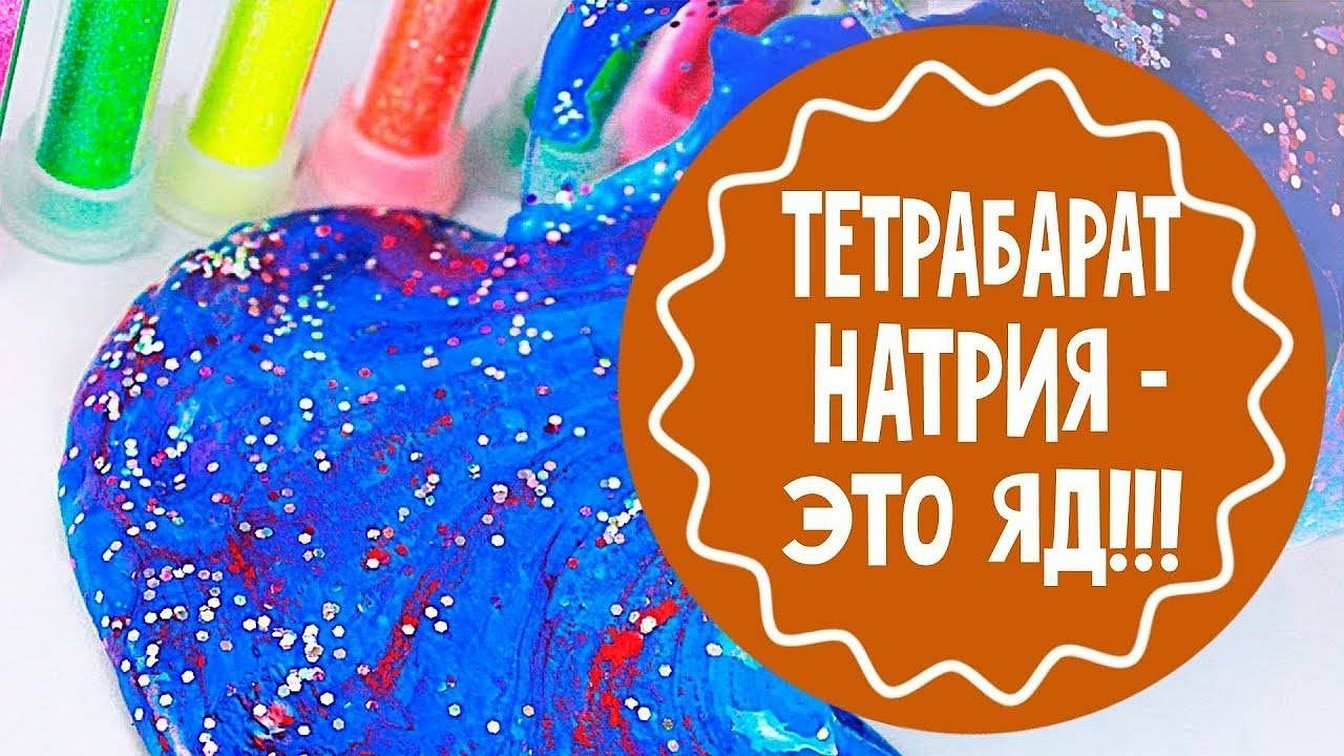
Safe Slime Recipes for Homemade Cooking
At home, you can make slimes from different ingredients, reducing the amount of dangerous reagents to a minimum.
Toothpaste Slime
To prepare it, you will need a tube of gel toothpaste and food coloring or paints.
Mix both ingredients in a metal bowl and stir. Put on low heat and heat for about 15 minutes to evaporate the liquid, stirring constantly. Remove from the stove and cool. Grease your hands with vegetable oil and mix the cooled mass well.
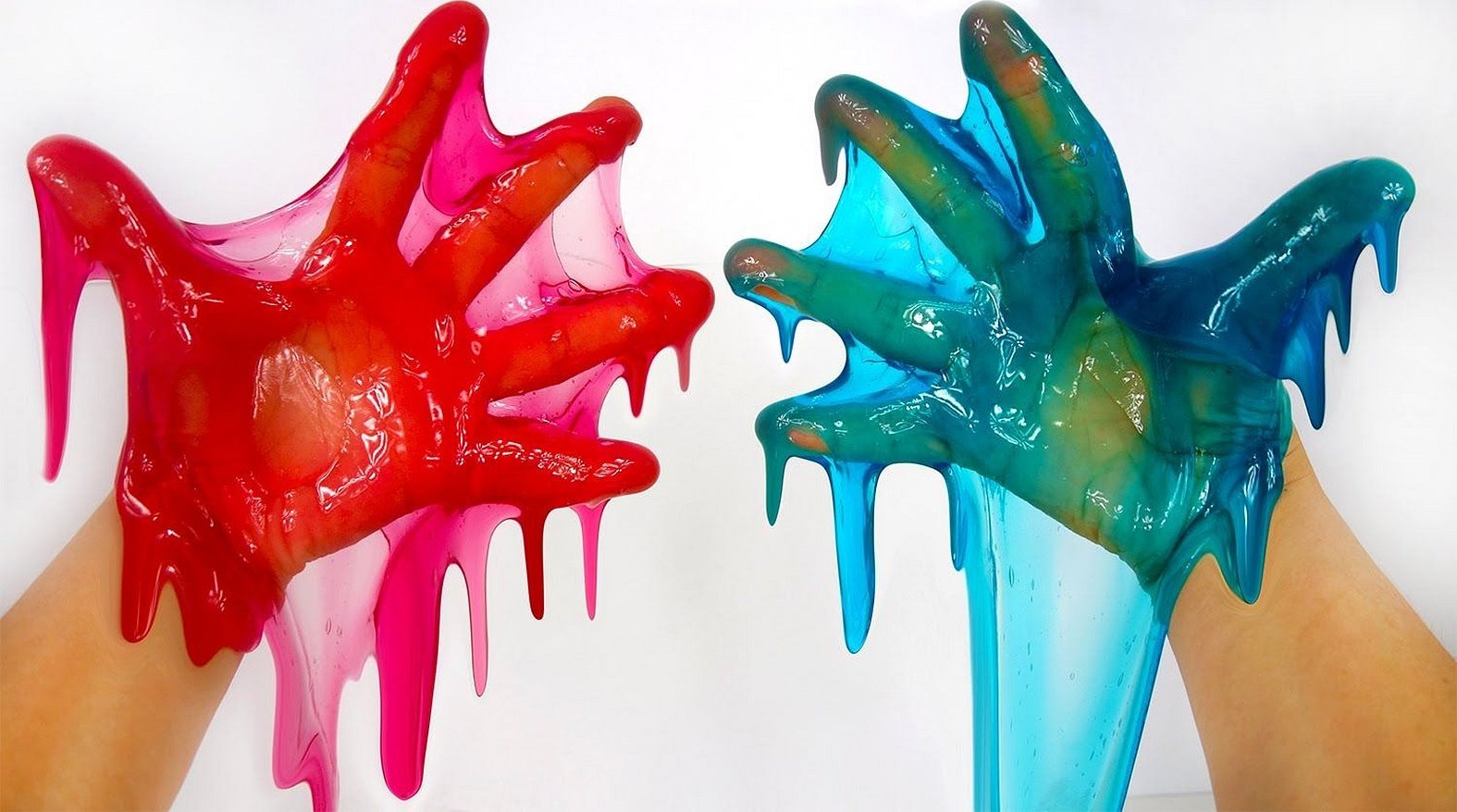
Slime made from plasticine
To make it you will need:
- gelatin,
- water,
- plasticine.
Pour cold water into a metal cup and add gelatin. Stir until smooth and leave for an hour.
Knead 100 g of plasticine well. Pour 50 ml of boiling water into a cup and put the plasticine in it. Stir with a spoon to form a homogeneous mass. Add the swollen gelatin to it. After mixing, put it in a cold place for half an hour. After that, you can play.
Edible slime
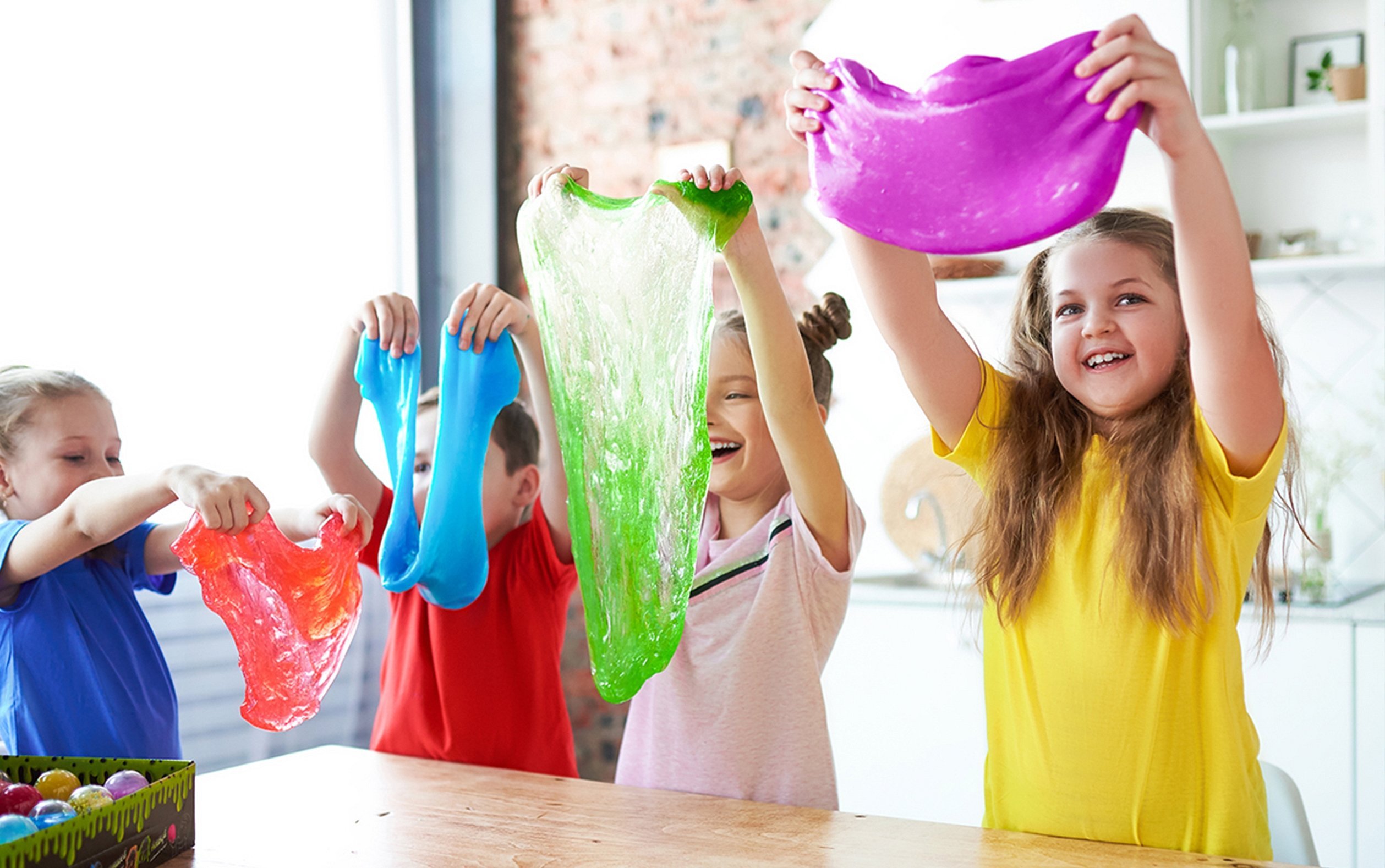
You can even taste this toy. But after playing, it is better to throw it away rather than eat it. Only 2 ingredients:
- Candies that tend to stretch - toffee or chewy.
- Powdered sugar or starch.
Place the candies in a small bowl and place it in a water bath to melt them. Sprinkle the table with powdered sugar and put the "toffee dough" on it. Knead. After cooling, the child can start playing.
Please note! It is better to put such slimes in the refrigerator, because they spoil very quickly. The best option is a disposable toy, play with it and throw it away. This way the baby will definitely be safe.
Games with slime are very exciting and thrilling. Knowing the precautions and strictly following the instructions, you can safely give your child any toys after three years.

